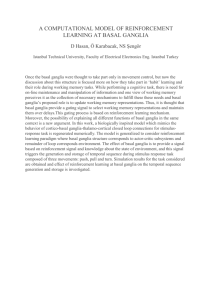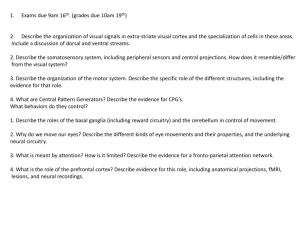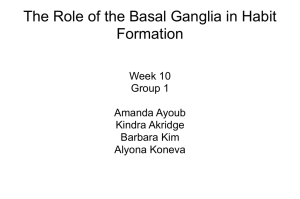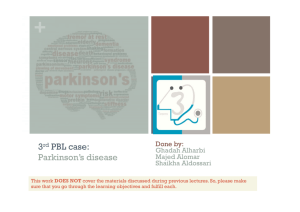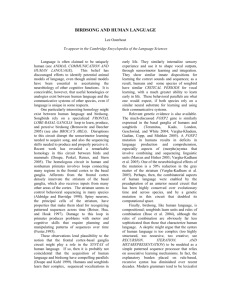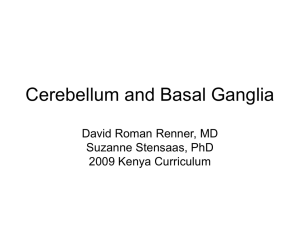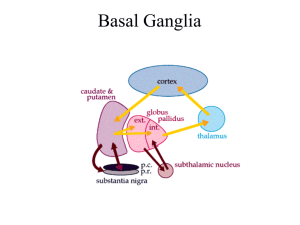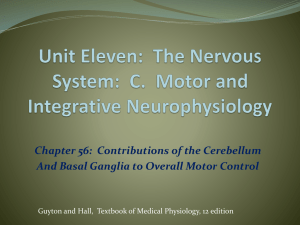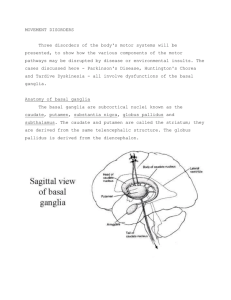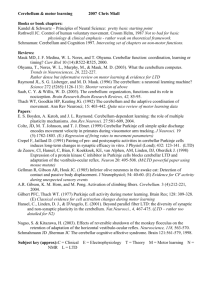Cerebellum, Basal Ganglia and motor control in the mammalian brain
advertisement
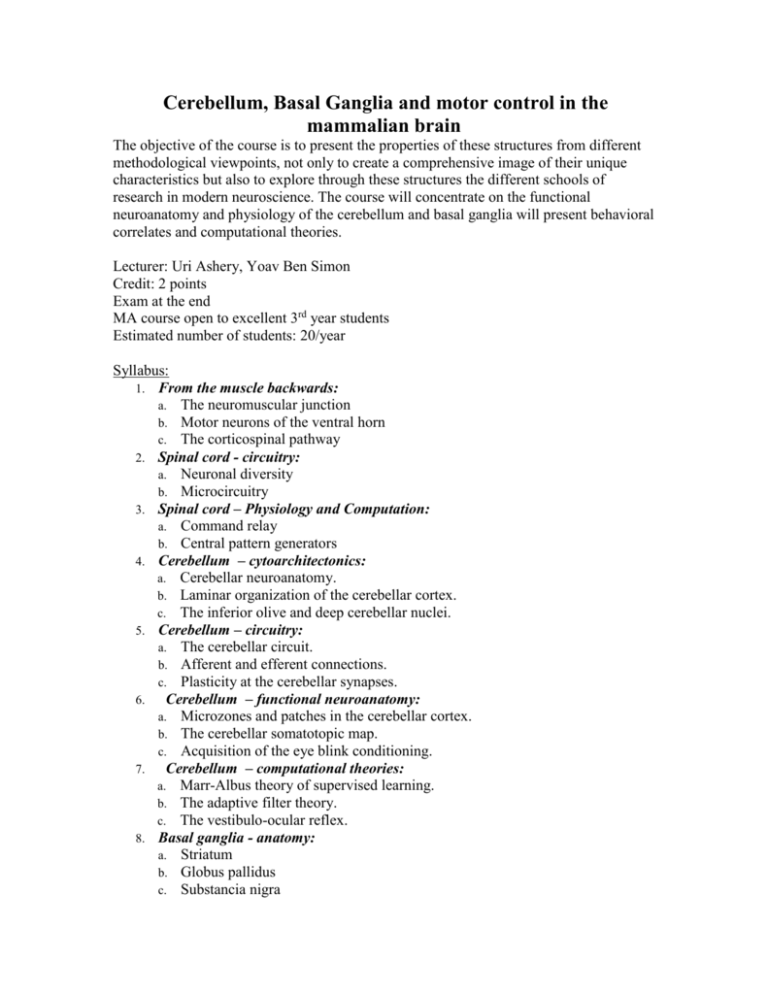
Cerebellum, Basal Ganglia and motor control in the mammalian brain The objective of the course is to present the properties of these structures from different methodological viewpoints, not only to create a comprehensive image of their unique characteristics but also to explore through these structures the different schools of research in modern neuroscience. The course will concentrate on the functional neuroanatomy and physiology of the cerebellum and basal ganglia will present behavioral correlates and computational theories. Lecturer: Uri Ashery, Yoav Ben Simon Credit: 2 points Exam at the end MA course open to excellent 3rd year students Estimated number of students: 20/year Syllabus: 1. From the muscle backwards: a. The neuromuscular junction b. Motor neurons of the ventral horn c. The corticospinal pathway 2. Spinal cord - circuitry: a. Neuronal diversity b. Microcircuitry 3. Spinal cord – Physiology and Computation: a. Command relay b. Central pattern generators 4. Cerebellum – cytoarchitectonics: a. Cerebellar neuroanatomy. b. Laminar organization of the cerebellar cortex. c. The inferior olive and deep cerebellar nuclei. 5. Cerebellum – circuitry: a. The cerebellar circuit. b. Afferent and efferent connections. c. Plasticity at the cerebellar synapses. 6. Cerebellum – functional neuroanatomy: a. Microzones and patches in the cerebellar cortex. b. The cerebellar somatotopic map. c. Acquisition of the eye blink conditioning. 7. Cerebellum – computational theories: a. Marr-Albus theory of supervised learning. b. The adaptive filter theory. c. The vestibulo-ocular reflex. 8. Basal ganglia - anatomy: a. Striatum b. Globus pallidus c. Substancia nigra Sub-thalamic nucleus Basal ganglia - circuitry: a. Direct and indirect loop. b. Local circuitry. c. Synaptic plasticity. Basal ganglia - neuromodulation: a. The dopaminergic system b. The noradrenergic system c. The serotonergic system Basal ganglia – behavioral correlates: a. Habit learning in the dorsal striatum b. Reward-based learning in the ventral striatum Basal ganglia – computational theories: a. Action selection theories b. Basal ganglia as a central pattern generator d. 9. 10. 11. 12.
